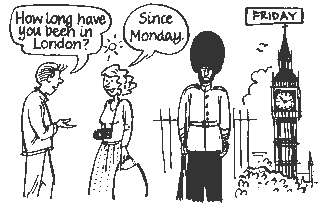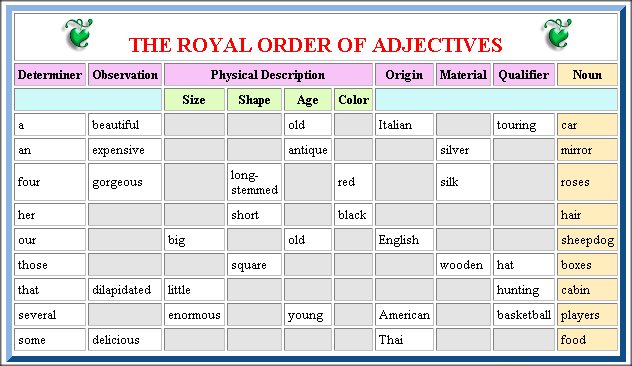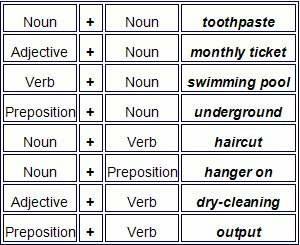UNIT 1-LIVE AND LEARN
MAKE OR DO?
Make: Is used when you talk about something you create with your hands.
- He made me a sandwich.
- She makes a watch.
- I do mathematics everyday.
- I do the exam for my school.
YET, ALREADY, JUST
These words are often used with the present perfect tense although yet, still and already can all be used with other tenses.
- I’ve just seen Susan coming out of the cinema.
- Mike’s just called. Can you ring him back please?
- Have you just taken my pen? Where has it gone?
Present perfect Progressive

Present perfect + yet, already and just.
Have you been to the art gallery yesterday?
No, I haven't been there yet.
UNIT 2 - THEN AND NOW
Order of adjectives

USED TO
It is better not to use "used to" in questions or negative forms; however, this is sometimes done in informal spoken English.

SO/TOO EITHER/NEITHER
We use 'so do I' to say that a positive sentence is also true for me, and I use 'neither do I' to say that a negative sentence is also true.


UNIT 3 - BUYING POWER
ARTICLE NO ARTICLE
A and an are the indefinite articles. They refer to something not specifically known to the person you are communicating with.
A and an are used before nouns that introduce something or someone you have not mentioned before.
THE VS NO ARTICLE
I love the flowers in your garden.
See you on x Wednesday.
INDIRECT QUESTIONS
Are a little more formal and polite. We use them when talking to a person we don't know very well.
UNIT 4 - TAKING CARE OF BUSSINES
Compound Nouns
Words can be combined to form compund nouns

Have get something done

UNIT 5 - THROUGH THE GRAPEVINE
Reported Speech

Reporting Questions
When we report what people say, we usually change the tense of the verbs to reflect that we are reporting – not giving direct speech. This pattern is followed when we report questions and there are also other important changes between direct questions and reported questions.
